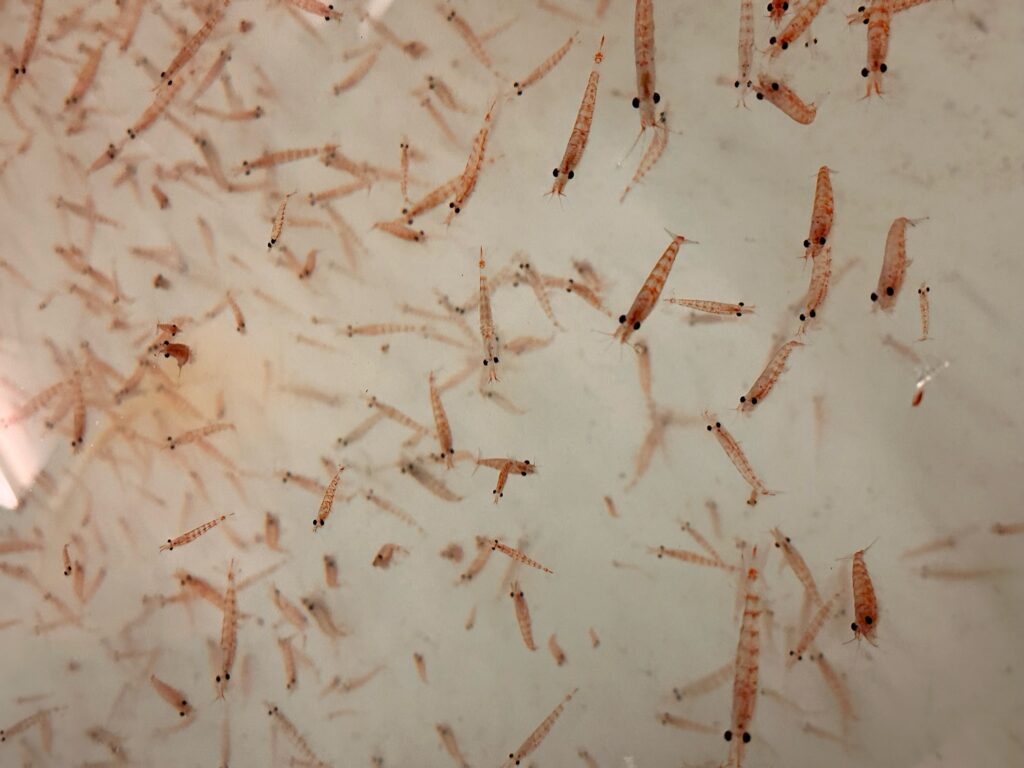By Rachel Kaplan, PhD student, Oregon State University College of Earth, Ocean, and Atmospheric Sciences and Department of Fisheries, Wildlife, and Conservation Sciences, Geospatial Ecology of Marine Megafauna Lab
Hello from Palmer Station, Antarctica! I’ve spent the last five months here in a kind of parallel universe to that of my normal life in Oregon. It’s spring here at the Western Antarctic Peninsula (WAP), and since May I’ve been part of a team studying Antarctic krill (Euphausia superba) – a big change from the Oregon species I typically study, and one that has already taught me so much.
I am here as part of a project titled “The Omnivore’s Dilemma: The effect of autumn diet on winter physiology and condition of juvenile Antarctic krill”. Through at-sea fieldwork and experiments in the lab, we have spent this field season investigating how climate-driven changes in diet impact juvenile and adult krill health during the long polar night. Winter is a crucial time for krill survival and recruitment, and an understudied season in this remote corner of the world.

Within this field season, we have been part of two great research cruises along the WAP, and spent the rest of the time at Palmer Station, running long-term experiments to learn how diet influences krill winter growth and development. The time has passed incredibly fast, and it’s hard to believe that we’ll be heading home in just a couple weeks.
There have been so many wonderful parts to our time here. While at sea, I was constantly aware that each new bay and fjord we sampled was one of the most beautiful places I would ever have the privilege to visit. I was also surprised and thrilled by the number of whales we saw – I recorded over one hundred sightings, including humpbacks, minke, and killer whales. As consumed as I was by looking for whales during the few hours of daylight, it was also rewarding to broaden my marine mammal focus and learn about another krill predator, the crabeater seal, from a great team researching their ecology and physiology.
In between our other work, I have been processing active acoustic (echosounder) data collected during a winter 2022 cruise that visited many of the same regions of the WAP. Antarctic krill have been much more thoroughly studied than the main krill species that occur off the coast of Oregon, Euphausia pacifica and Thysanoessa spinifera, and it has been amazing to draw upon this large body of literature.
Working with a new flavor of echosounder data has presented me with puzzles that are teaching me to navigate different modes of data collection and their analytical implications, such as for the cruise track data above. I’ll never take data collected along a standardized grid for granted again!
I’ve also learned new techniques that I am excited to apply to my research in the Northern California Current (NCC) region. For example, there are two primary different ways of detecting krill swarms in echosounder data: by comparing the results of two different acoustic frequencies, and by training a computer algorithm to recognize swarms based on their dimensions and other characteristics. After trying a few different approaches with the Antarctic data this season, I developed a way to combine these techniques. In the resulting dataset, two different methods have confirmed that a given area represents krill, which gives me a lot of confidence in it. I’m looking forward to applying this technique to my NCC data, and using it to assess some of my next research questions.
Throughout it all, the highlight of this season has been being part of an amazing field team. I’m here with Kim Bernard (as a co-advised student, I refer to Kim as my “krill advisor” and Leigh as my “whale advisor”), and undergraduate Abby Tomita, who just started her senior year at OSU remotely from Palmer. From nights full of net tows to busy days in the lab, we’ve become a well-oiled machine, and laughed a lot along the way. Working with the two of them makes me sure that we’ll be able to best any difficulties that come up.
Now, our next challenge is wrapping up our last labwork, packing up equipment and samples, and getting ready to say goodbye. Leaving this wild, remote place is always heartbreaking – you never really know if you’ll be back. But there’s a lot to look forward to as we journey north, too: I can’t wait to hug my family and friends, eat a salad, and drive out to Newport to see the GEMM Lab. I’m excited to head back to the world with everything I’ve learned here, and to keep working.






